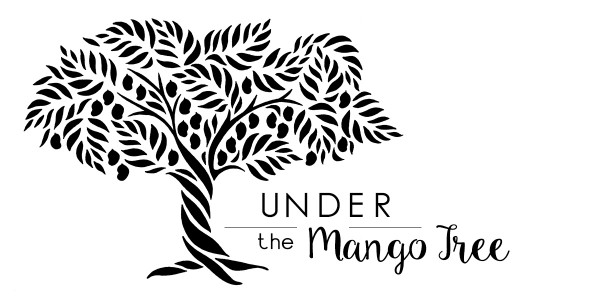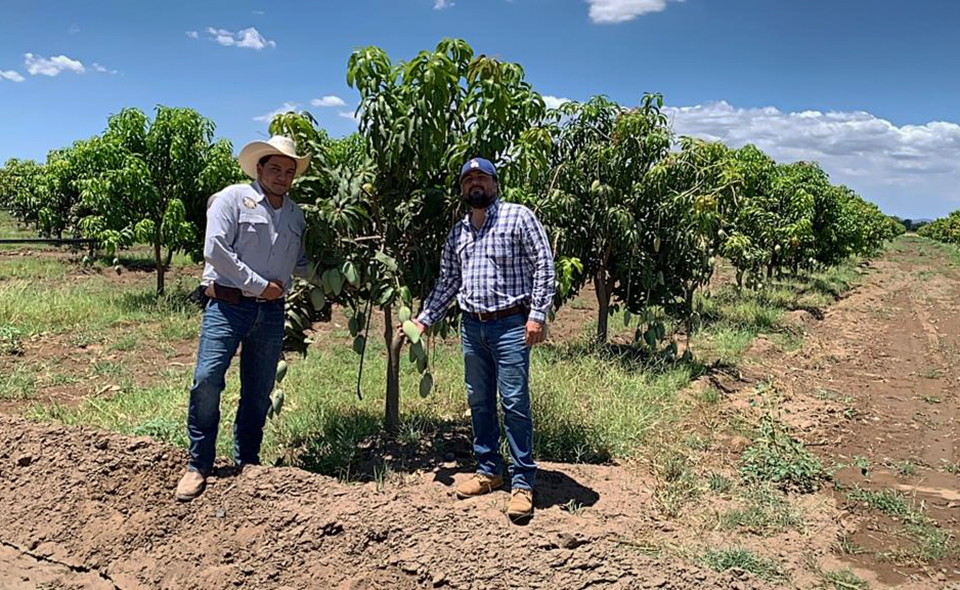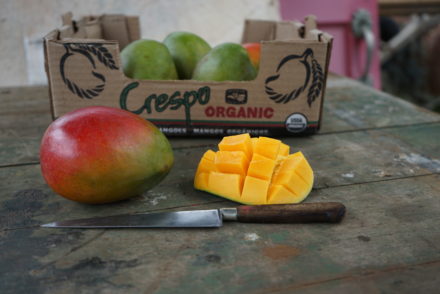Thailand’s most famous dessert mango #HechoEnMexico
Where exactly is Jorge the Crespo Mango Man these days? We haven’t seen him in a while, which usually means he’s deep in the thickets of his secret projects.
Jorge Crespo is one of the four Crespo siblings, who alongside his mother run the family agricultural business ( El Grupo Crespo) that was established in 1960 in El Rosario, Sinaloa, Mexico by Jorge Longinos Crespo, Jorge’s grandfather and whom he was named after.
Jorge (Crespo) has a deep passion for all things new and different and a totally forward-thinking personality. All the Crespo siblings inherited this from their father, Roberto Crespo Fitch, who built Empaque Don Jorge in 1971 and began the family’s venture into the global world of growing, packing and exporting mangoes, and paving the way for Jorge’s sweet and intoxicating journey into growing the worlds most coveted mango cultivars in Mexico.
El Grupo Crespo’s aim is not simply to increase production and consumption of organic Mexican mangoes but to do so in a way that creates long term viable, profitable and sustainable agricultural models for their surrounding growing communities. This not only means constantly improving but changing as markets do, as economics do and as consumers needs and desires do.
Many of the most coveted mangoes in the world (think India, Thailand and Pakistan) cannot be imported without irradiation and have such long and severe travel times it becomes a near impossible and ultra-expensive endeavor to even try. Most of these lusted after mangoes are fibreless and have incredibly thin skin making them almost impossible to import in good quality, let alone with any shelf life that would make retail distribution possible.
And if you are an ardent organic supporter, forget it all together. All of the mangoes imported into the USA from anywhere other than Brazil, Peru, Ecuador, Mexico, Guatemala and the Dominican Republic have mandatory APHIS irradiation requirements -Ionizing radiation- same form of energy used in x-rays.
APHIS is the Animal and Plant Health Inspection Service, and branch of the USDA and the agency responsible for preventing all foreign pests from entering the country. Fruit fly infestation in the US, from the Mediterranean and Mexico, were severe in the early 80’s wreaking havoc on local agriculture. The commercialization of mangoes into the USA only began around the mid to early 80’s. In 1987, not long after, the hot water treatment was approved for Mexico in order to keep mango trade growing and protect US agriculture from the Mexican fruit fly.
Most of the original varietals, planted and expanded in Mexico (and the other Latin American countries) were mostly cultivars originating from Florida, many of which are hybrids and most cultivars are fairly fibrous in nature compared to mangoes in other parts of the world like India, Pakistan and Thailand etc.
But how did mangoes get to Florida?
Mangoes are said to have originated in India and with the spread of Buddhism began to make their way across Asia and east Africa in and around the 10th centrury. It was the Portugese who brought mangoes to Brazil int eh 16th central and from Brazil they spread across the Americas. They made their way into Mexico in the early 19th century and weren’t even grown in the US until the 1800’s.
But the first mango tree in Florida was (supposedly) a Haden (one of my personal favorite varietals) and it is said to have come from a Mulgoba Indian mango in 1902. What makes sense in terms of all these varietals is that every mango tree planted by seed produces a new varietal. And so in Florida, around the time mangoes were being introduced to more consumers and early commercialization infrastructure was starting to be built, the race was on in this selective breeding, trying to achieve the most fetching characteristics, in particular for shelf life and travel time which meant thicker skin and fuller flesh and a lot more fiber than that of the original mangoes they haled from. These varietals also proved to be optimal for the eventual hot water bath due to the same heartiness.
Most new commercial mango production these days happens in the form of grafting, where a branch of one varietal is connected to the root stock of another and the tree is essentially cloned. Farmers grow orchards of the same varietal and this is how a new varietal is often scaled.
Jorge had the great idea years ago, to expand the original idea of his father, when he was gifted some Thai Sweet Green Mango trees (Mamuang Kiew Sa Wei) from a customer in Thailand many moons ago – to widen the commercial production in Mexico to include smaller amounts of some of the worlds most coveted varietals for US/Canadian markets at peak season and peak consumer demand – summer time.
Roberto Crespo Fitch was the first to plant the Thai Sweet Green Mangoes in Mexico and Jorge, along with several other partner growers (it takes a village) are the first to produce multiple specialty varietals within the peak summer season. El Grupo Crespo continues to push the boundaries of what’s possible when it comes to mangoes and trying o do so in a way that brings reward to the Mexican communities as well as American consumers.
It takes years to move through red tape of importing trees and/or root stock and then even more years until the fruits of Jorge’s labor make actual fruit. Hot water bathing these thinner skinned, softer flesh fruit isn’t easy. There is a gigantic learning curve in the process from baby tree to fruit on the table. In mangoes, Id argue like life, everything is connected, so even though you think a problem with skin or black spots is about the hot water bath (its an easy blame) the hot water bath basically exacerbates problems that existed well before the bath. (It can also create some)
According to Jorge, where the product is grown, the night temperatures, the rainfall during and after blooming, the nutrients in the soil- all of these things that happen months and months before the fruit gets dunked in the hot water. All of these things need to be learned, improved, researched- which is why these specialty varietals take so long.
It’s also why Jorge is constantly chatting via what’s up with the worlds secret underground mango community not just trying to find the best varietals, but discussing with mango farmers all over the world how to take care of these varietals.
The specialty mango program Jorge is essentially creating for El Grupo Crespo is extensive and incredibly hard work. But a joyous one for Jorge and those of us who reap the sweet taste of his efforts.
Last season we introduced the Mallika’s which are currently available in stores all over the country, including Walmart. And they are delicious! And now, a sweet surprise, we are introducing our Nam Doc Mai mangoes. This is a very special mango. The fruit is extremely limited and will only be available a few short weeks.
Like all of our specialty varietals the Crespos’s expand production as Jorge perfects the growing and water bathing nuances and as we on the sales side build sales and educate consumers on the new varietals. We utilize our strong and loyal customer base as partners in these new endeavors- everyone needs to be moving in the same direction, living in the same realities for it to work, sharing in problem solving, experts in each of our lanes- which is why I love the quality centric Direct- Trade model we work under – shared goals, trust and transparency- this combined with forward thinking- actually moves you all forward together.
Crespo Organic Nam Doc Mai
The Nam Doc Mai (translates to sweet nectar of the blossom) is a Thai cultivar and Thailand’s best known “dessert” mango. One of the worlds most coveted mangoes and the mango best used in Thailand’s famous dish- Mango Sticky Rice.
The mangoes are shaped similar to a Ataulfo with bigger elongated bodies and a prominent beak shaped tip. They have an incredibly thin pit. Their size range varies, weighing typically between 10 to 20 ounces. They start out a pale color green and ripen into a bright canary-yellow, occasionally with some light green streaks. Sometimes a tinge of red or pink blush will be prominent from where the sun hit the shoulders of the fruit through tree branches.
Nam Doc Mai are incredibly juicy with a fiberless custard-like, deep yellow flesh. Their flavor is extreme mango and they have an intense tropical flower aroma. The taste of the sweetness is reminiscent of coconut cream and honey.
Some folks claim this mango to be the actual King (Queen) of Fruit, while others claim its India’s Alphonso. I can’t say either way I have never had either. But I will soon because of course Jorge has a secret orchard of Alphonso’s somewhere in Mexico!
Nam Doc Mai
History: Originated from Thailand, the most popular varietal in Thailand today
Shape: Shaped similar to an Ataulfo but bigger with a more elongated bodies and a prominent beak shaped tip and an incredibly thin pit.
Color & Hues: Pale green color, ripens into a bright canary-yellow, occasionally with some light green streaks and a tinge of red or pink blush.
Flavor and Aroma: Extreme mango flavor and intense tropical flower aroma. The sweetness tastes of coconut cream and honey.
Ideal Ripeness/Ripening Cues: Ripe when soft, Juicy, fiberless custard-like deep yellow flesh.
Size: Size range varies, weighing typically between 10 to 20 ounces.
Cutting Method Suggestions: Cut a cheek off and spoon it out like a custard.
Kitchen Tip: Thai Sticky Rice is obvious but get creative with this one’s sweetness. It juices well.
*We are getting Nam Doc Mai in the Crespo Organic Kitchen this week and we will begin experimenting with this new to us varietal and soon be able to provide more education on choosing, storing and using! This is very exciting stuff!
*Keep an eye out for the launch of our full organic specialty mango line which will come out during next seasons Summer Mango Mania in 2023!














No Comments